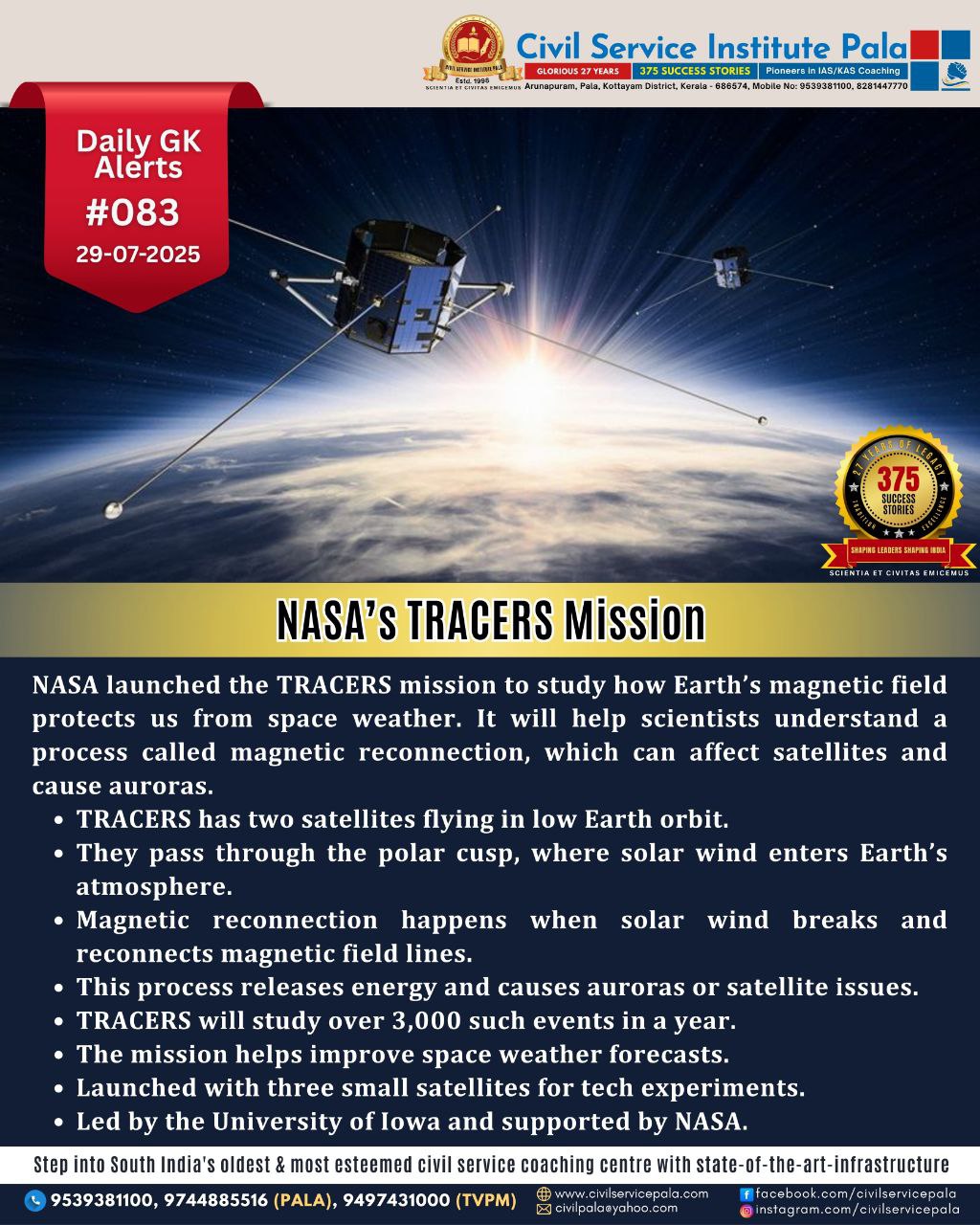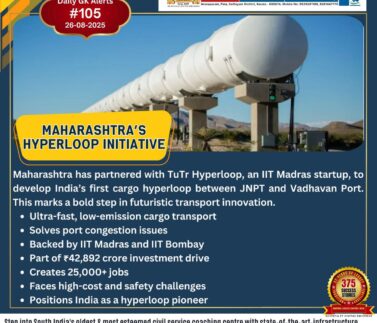
NASA’s TRACERS Mission
NASA’s TRACERS Mission: Understanding Earth’s Magnetic Shield
NASA’s TRACERS (Tandem Reconnection and Cusp Electrodynamics Reconnaissance Satellites) mission aims to study how Earth’s magnetic field protects the planet from space weather, particularly through a process called magnetic reconnection. These findings are expected to improve space weather forecasting and safeguard satellites and astronauts.
What is TRACERS?
TRACERS is a twin-satellite mission that flies in low Earth orbit, passing through the polar cusps — funnel-shaped regions in Earth’s magnetic field. These areas allow the solar wind, a stream of charged particles from the Sun, to enter the atmosphere. The satellites study how this interaction causes magnetic reconnection.
Understanding Magnetic Reconnection
Magnetic reconnection happens when the Sun’s magnetic field, carried by the solar wind, clashes with Earth’s field. This causes magnetic field lines to break and reconnect, releasing massive energy. It leads to phenomena like auroras but also disrupts satellites and GPS systems.
Mission Goals and Methods
The twin TRACERS satellites will fly just 10 seconds apart, measuring over 3,000 reconnection events in a year. Their coordinated flight helps scientists understand how reconnection evolves over time by observing magnetic and electric field changes during such events.
Other Satellites Launched
Alongside TRACERS, three small satellites — Athena EPIC, PExT, and REAL — were launched to test new communication and science technologies.
Leadership and Collaboration
The mission is led by David Miles at the University of Iowa with support from NASA and other research institutions. TRACERS complements other space missions like MMS, PUNCH, and EZIE to provide a complete picture of Earth-Sun interactions.
TRACERS is a key mission that will deepen our understanding of how space weather affects Earth. Its discoveries will help protect modern technology and advance future space exploration.



